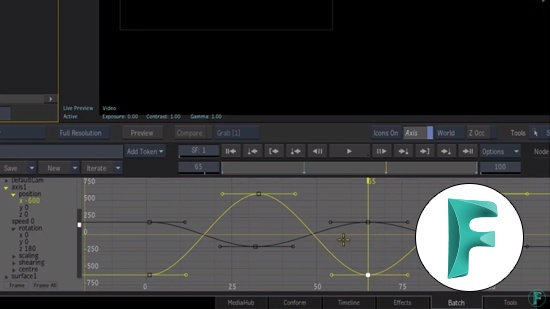

- #HISTORY OF AUTODESK FLAME HOW TO#
- #HISTORY OF AUTODESK FLAME FULL#
- #HISTORY OF AUTODESK FLAME SOFTWARE#
- #HISTORY OF AUTODESK FLAME FREE#

You’ll examine the various import methods as well as organising and colour coding the Media Panel for ease of use. This includes caching, custom settings and basic colour management settings. In part 4, you’ll learn all about importing media into the Flame workspace via the MediaHub. PLEASE NOTE: Media only available when attending training via an Autodesk Training Centre or Autodesk Recognised Educational institution. The ability to retouch images, create comps, add VFX and motion graphics offers the Editors a newly found freedom to finish the project for the final delivery.
#HISTORY OF AUTODESK FLAME FREE#
In part 3, you’ll learn all about the Flame interface and how its unique artist friendly nature enables one to work in a very intuitive and free way.īeing able to effortlessly move between the Desktop Editing Reels, the Timeline and the Batch Compositing gives the artist complete freedom to create and finish the project, using state of the art tools, to the highest standard.įor Compositors and VFX Artists having constant access to all the Project’s Media,the Desktop Reels and the Timeline is invaluable as one can organise the work and view the shots in the context of the sequence. You’ll also learn about creating a Flame users and how it can influence the way you work in the Flame family.
#HISTORY OF AUTODESK FLAME HOW TO#
You’ll go through the various details to set up a project as well as how to manage multiple project within the Flame Workspace. Part 2 show you how to create a new Flame project and a new Flame user. Part 2 – Create a Project and User in Flame It has been the primary choice of advertising agencies and film directors for the creation of high-end VFX and the finishing of their films for more than twenty years.
#HISTORY OF AUTODESK FLAME SOFTWARE#
Flame is a unique high-end VFX software that can handle the entire postproduction process from Editing, Colour Correction, VFX, Compositing and Motion Graphics, all the way to delivery. Part 1 introduces you to the Flame Family of products. Part 10 – Exporting and Archiving in Flame.Part 8 – TimelineFX and Colour Correction in Flame.Part 7 – Timeline Colour Management in Flame.Part 5 – Gestural and Timeline Editing in Flame.Part 2 – Create a Project and User in Flame.Use the links below to jump to the tutorial you want to watch. It’s the perfect guide for the novice Flame user.
#HISTORY OF AUTODESK FLAME FULL#
The end of its development was never officially announced, but the company was known to be concurrently developing a new compositing platform, Autodesk Toxik.This 10 part tutorial series walks you through the full process of project creation using Autodesk Flame, including importing, editing, conforming, color correction, batch compositing, exporting and more. The last version of Combustion was Combustion 2008. Combustion was a superior software tool for vfx frame to frame painting, with some of functionalities still not currently included in other compositing software in 2019. This is in contrast to the exclusively either layer based or node based interface used by some other compositing applications.Ĭombustion was a main support software tool for Flame and Inferno. It shares a timeline based interface and also a node based interface with Autodesk Media and Entertainment's (formerly Discreet) higher-end compositing systems Inferno, Flame and Flint. Combustion was a computer program for motion graphics, compositing, and visual effects developed by Discreet Logic, a division on Autodesk.


 0 kommentar(er)
0 kommentar(er)
